A croc by any other name...(old)

We are pleased to announce the newest species named to the growing pantheon of AAS fossils: say hello to Deltasuchus motherali! This paper has been a long time in the making, and after a lot of effort has finally been published in the Journal of Vertebrate Paleontology. This work was completed thanks in part to your support.

WHAT A FIND!
Not only is it cool to name a new specieis from the site, but the story of its discovery is equally interesting. In the blistering summer heat of 2009, numerous volunteers were working with Dr. Derek Main uncovering fossils from the western portion of the dig site near where dinosaur material had been found. Austin Motheral, who was 15 years old at the time, was volunterring in between his daily driving school classes and loving every minute of it. Austin's family had a John Deere tractor with a bucket loader on front, so he brought it out one day to help move earth. It can be a tricky thing digging with large equipment, so Derek had Austin work on moving some dirt to expand the parking area. Not long that he started uncovering bone–right where they had been parking their cars! Immediately recognizing the importance of his discovery he called people over to check it out. He had uncovered a treasure trove of bones, a dense accumulation of crocodile bones in an area that came to be named "Crocorama". Teams of people worked tirelessly around the clock to remove everything for fear of vandals destroying or taking off with the precious fossils. That material, pictured above, would come to be recognized as a new species of crocodilian.


WHY DELTASUCHUS IS IMPORTANT
Deltasuchus is a species unique to the Woodbine Formation and found nowhere else on Earth. It ruled the coastlines and waterways of ancient DFW 95-100 million years ago. Adults grew up to 20 feet (6 meters) long in life, and left behind bite marks on the fossilized bones of prey animals letting us know that it ate pretty much whatever it wanted in its environment, from turtles to dinosaurs. Not only that, but its closest relative, Paluxysuchus, is also a Texas native, which points to a previously unrecognized lineage of ancient crocodilians living in the Cretaceous of Texas. Deltasuchus has a mix of features found in other fossil crocodyliforms and may be helpful in understanding relationships among these different taxa.

Thank you again for your support. We couldn't have done it without you! Look out for more updates on new discoveries.
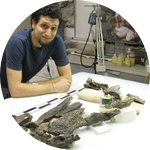
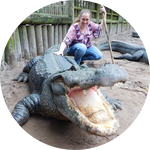
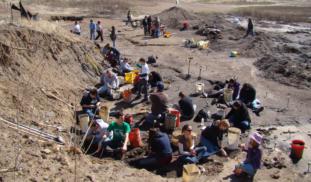


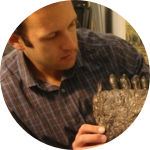
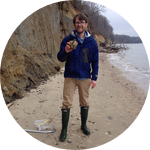
3 comments